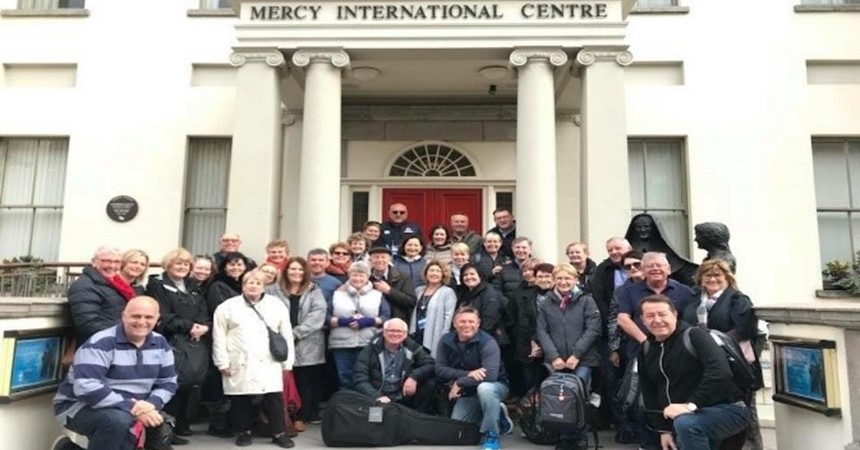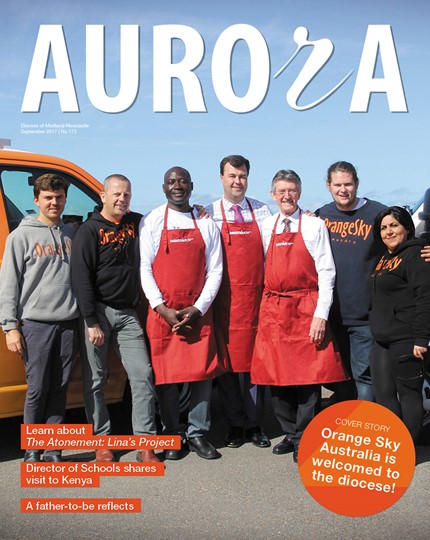Just as important was the realisation that while a pilgrim in the 21st Century does not face the perils of ancient times, there is one element of a pilgrimage that remains - it is a spiritual journey.
The elements of generosity, adaptability, flexibility and a positive attitude are all primary prerequisites if there is to be a joyful conclusion to all travel.
As we journeyed together we took time, to pray, to reflect and to care for one another. The spirit of mercy, compassion, respect, justice, reconciliation, hospitality service and courage were reflected upon each day in our journeying together.
On day one of our pilgrimage as we went to Coolock House and then on to Georges Hill and later to Baggot Street, Mercy international House in Dublin, we discovered that Catherine McAuley’s desire to serve the poor was grounded in her reading of the Gospels and her desire to imitate Jesus Christ.
Even though concern for her family and her neighbours eventually drew her to a concern for the world beyond Baggot Street and Dublin, Catherine knew that the poor people needed help immediately and could not always wait for the completion of grand charitable designs. Personal, often simple, service was a necessary component of her desire to live as Jesus lived. Catherine provided examples of the sort of compassionate, sensitive, cheerful, and generous service that should characterise all Christians.
Our pilgrimage continued on to the holy town of Glendalough Valley of the two lakes. This renowned place of pilgrimage was the site of the monastic settlement founded in the 6th century by St Kevin – a man of noble stock.
Coming here to be alone as an ascetic contemplative monk, his prayerful inspiration ironically attracted many others and thus the community of Glendalough springs from a hermitage.
From a simple beginning, the site grew to become famous as a centre of learning throughout Europe. Standing for 600 years it was destroyed in 1398. The remains at the upper site are simpler and more in fitting with his life as a hermit, whereas the lower one has the more famous monastic monuments – one of Ireland’s best preserved Round Towers, a roofless Cathedral, St Kevin’s kitchen and the diminutive Priest House over the Saint’s tomb.
This was made very special for our group as we had Mass, On The Run celebrated by Fr. Peter Rodgers and our own chaplain, Fr. Andrew Doohan. All the pilgrims were very moved by this experience and the beauty of Glendalough.
The pilgrimage continued through Wicklow, birth place of Bishop Murray via Kildare where we visited the healing well of St Brigid and St Brigid’s Cathedral. Later we travelled to Waterford, home of the world-famous crystal, and the place where the Christian Brothers began.
Continuing on the pilgrimage we arrived at the foreboding Rock of Cashel, an impressive great rock rising abruptly from the plain of the Golden Vale, on which stands Ireland’s first Romanesque Church (11th century). St. Patrick visited the rock in 450 AD, while Brian Boru was crowned the first high King of Ireland here in the tenth century. We then continued on to the Nano Nagle Centre at Ballygriffin. Nano Nagle, was the founder of the
Presentation Sisters, where Catherine McAuley completed her noviciate.
In Knock we celebrated Mass at the Marian Shrine in the Church of Apparition where Our Lady appeared in 1879 on a wet rainy night. We all enjoyed a tour of the shrine’s highlights.
In Belfast, Northern Ireland, we were given a greater understanding of the troubles of Northern Ireland. The amazing Titanic Belfast exhibition which is housed on the site where the Titanic was built, gave the pilgrims a further deepening of what shaped the spirituality of Northern Ireland as we explored the Titanic story.
On our final night of the pilgrimage we enjoyed a special celebration dinner with all pilgrims expressing a deep gratitude for being on pilgrimage.
“Mercy is a way of life not an act of kindness”
Maria McGinnis RSM























































































